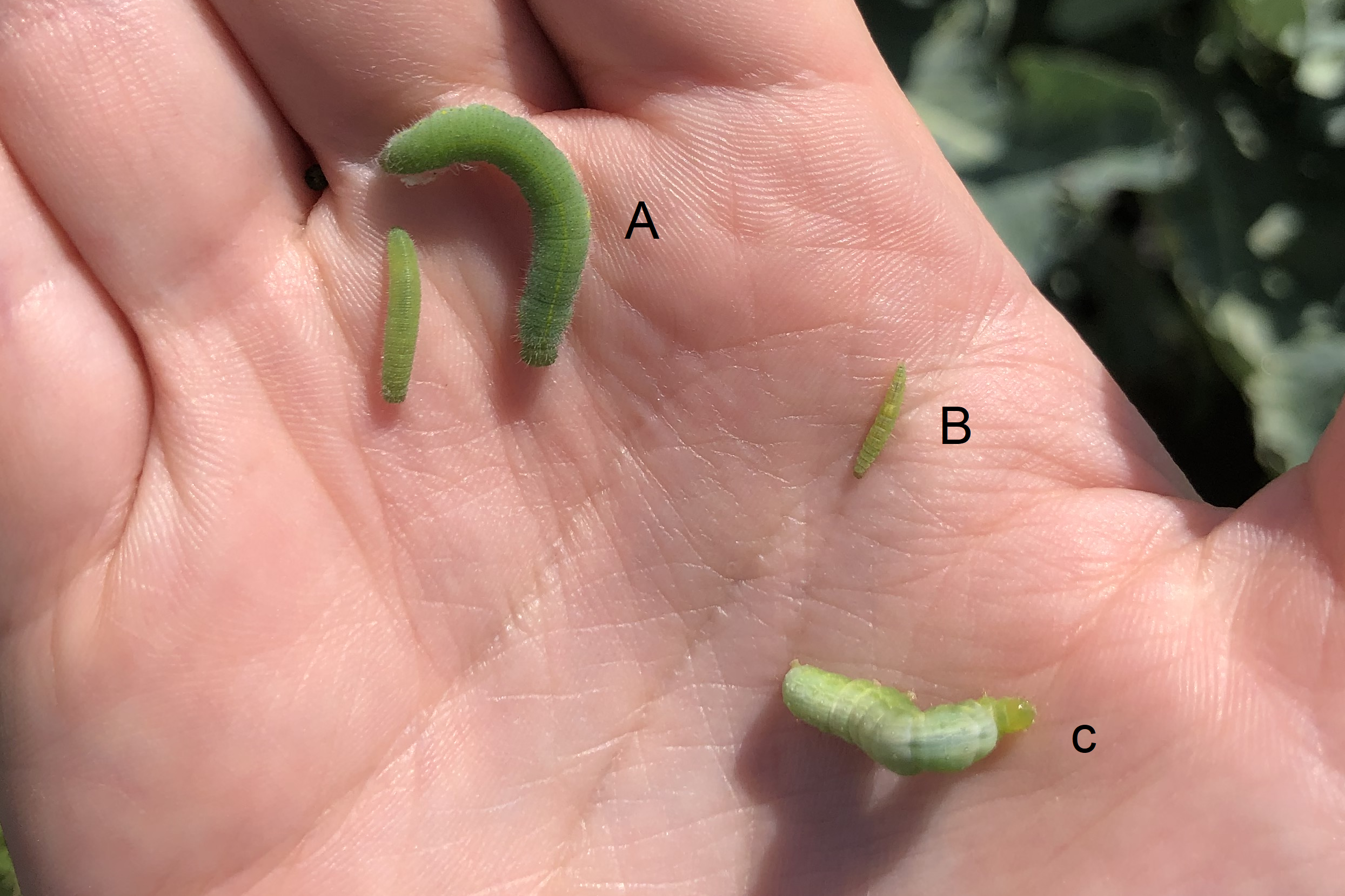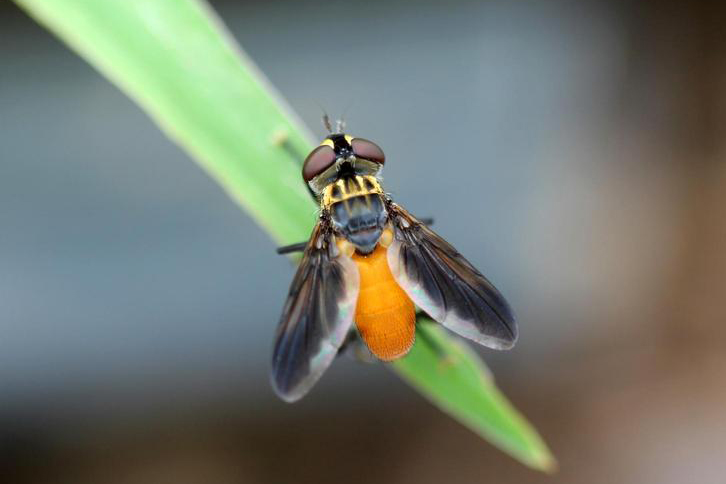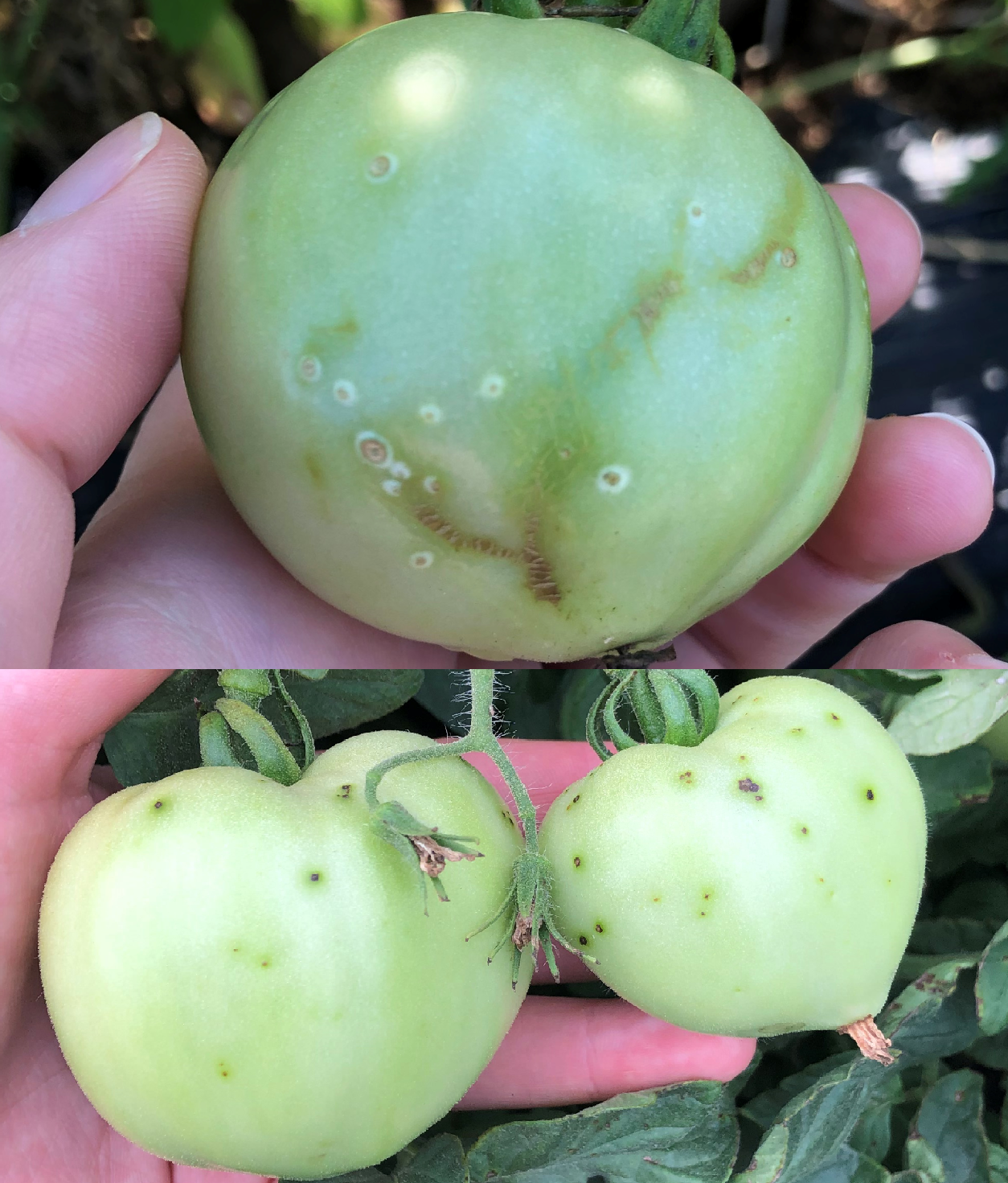Southeast Michigan vegetable update – Aug. 5, 2020
Rain brings relief to our dry area. Disease and insect issues continue to pop up.

Weather
The area received much-needed, widespread rain. Many areas got 1-1.5 inches of steady rain over multiple days that penetrated deeply into the soil. Some of the most southeastern portions of the region got much less, around a quarter of an inch, in one or two events.
The fall-like weather we have had over the last few days is on its way out, with a new, high-pressure system rolling into the area. There will be sunny, warm, not-humid days with high temperatures increasing with each passing day. The next chance of rain will be Sunday, Aug. 9, as an unsettled weather pattern moves in. This means there will be chances of rain daily early next week, as well as above-normal temperatures into next week. Longer-term forecasts are predicting a warmer-than-normal August.
The table below shows rainfall totals for the Michigan State University Enviroweather stations in southeast Michigan, as well as degree-days calculated using the Baskerville-Emin Method. Degree-day average for Commerce and Hudson is over five years, while Deerfield is over four years. Rainfall is in inches. For a refresher on degree-days and how to get this information in your area, see “Accessing growing degree days with Enviro-weather” from MSU Extension.
|
Rainfall and degree day totals as of Aug. 5, 2020 |
||||
|---|---|---|---|---|
|
Station |
Degree days (base 42) |
Degree days (base 50) |
5-year degree day average (base 50) |
Rainfall since April 1 |
|
Commerce |
2556 |
1710 |
1675.2 |
11.12 (+0.93) |
|
Deerfield |
2764 |
1875 |
1911.9 |
10.09 (+0.44) |
|
Hudson |
2567 |
1716 |
1758.9 |
13.37 (+1.45) |
General notes
The rain and cooler weather will be a minor setback for heat-loving insects pests, like aphids, mites and thrips. When scouting, make sure to take along a hand-lens so you can see these smaller pests. When the heat picks up and scouting suggest these pests’ numbers are ballooning again, resist the urge to start using cheaper, broad-spectrum insecticides. So much of the control of these small, quickly reproducing insects is provided by other insects. Broad spectrum insecticides are unlikely to provide adequate control of aphids, mites and thrips, and once the pesticides wipes out natural enemies, you are more likely to end up using the more expensive products anyway when aphid and thrips populations rebound unchecked. Starting out with the more-selective, expensive products is more likely to lead to lasting control.
Crop reports
The cabbage caterpillar complex it is out in full force in some cole crop fields. Multiple instars of the velvety imported cabbage worm are feeding, as well as the small, cigar-shaped diamondback moth. I continue to find cabbage looper, which moves in the arching-inchworm fashion. Having all three of these present in our area means some pretty rapid feeding and damage can happen. The warm weather we have had has led to some riciness in cauliflower.

Overall, peppers are looking good and fruit are sizing up nicely.
Heat has pumpkins and winter squash starting to change colors. Powdery mildew is picking up. Squash bug pressure is variable.

Sweet corn traps are catching low numbers of moths. Corn earworm catches in the last week averaged 1.1 moths a night in Lenawee and 0.4 moths a night in Monroe. Sprays every four to five days should take care of corn earworm currently. Western bean cutworm catches were 25 in Monroe and 7 in Lenawee. Western bean cutworm populations are spiking elsewhere in the region, so we may be in peak flights and my traps are not representative of what is actually happening. If this is a pest you’ve struggled with in the past, or if you are growing transgenic corn without the Vip3a portion (Attribute 1 and Performance series), scout for egg masses in pre-tassel corn to determine if this is a pest worth spraying for when ears develop.
Corn earworm populations have been low so far this year, but in August corn earworm pressure typically increases dramatically. As you gear up for more regular control measures, it is good to brush up on what corn is most at risk, and what products are most appropriate based on moth pressure.
Corn earworm moths are attracted to green silk, where they lay their eggs. This means that is important to get treatment on fresh silks, with a general rule of thumb being to start treatment when 25% of silks are great, and end sprays when 90% of silks are brown. Insecticides will need to be applied as silks grow, which means sprays need to be made often during hot spells, which causes silks to grow quickly and eggs to hatch in shorter timeframes. If field corn is also silking, the moths will also be attracted to those green silks, which allows you to stretch your spray intervals out.
So what are your treatment options? It depends. Corn earworm is a pest where there is known resistance to pyrethroids, but work done at over multiple years the Ohio State University has shown that pyrethroids provide adequate control when moth populations are low. To achieve this control, they are best used at the maximum rate. They have also found that Hero, a mix of two pyrethroid chemistries, can provide better control than products that contain one pyrethroid chemistry. Make sure to stay within permitted seasonal limits (see labels, Hero label has table outlining this). When populations and pressure are high, alternative chemistries like Coragen, Radiant, and Blackhawk can aide in control. If growing organically, Entrust applied directly to the silks can provide control.
If you are more of an audio learner, a recent episode of the Great Lakes Vegetable Producer’s Network podcast covers this and more. It is really interesting, and I have been told it is better than listening to the same five songs on the radio.
I have gotten many complaints about birds, and questions about laser scarecrows in sweet corn. Research on the East Coast (both done by growers and the University of Rhode Island) have had success with these homemade versions of these devices. They note that key in getting them to work is to have them deployed before birds settle into a field and the need to be set up so the lasers hit the canopy in a certain way. Commercial units are expensive, though there are plans online for building your own for ~$500. I would also note that we don’t have a good understanding of what density these traps would need to be placed at for adequate control in larger plantings. Researchers also note they will likely still need to be paired with other scare tactics.
There is also smut present in some sweet corn fields. Compared to other plant diseases, corn smut isn’t as aggressive, as it typically infects the plant through existing wounds. Smut can infect any above-ground part of the plant, particularly the growing, young tissues. The development is very variety dependent.

Some tomato plants look pretty ragged due to the combo of disease like Septoria and early blight creeping upwards on the plant, and tomato hornworm defoliation of the top part of the plant. Bacterial diseases can be found on developing fruit.
Reach out
Please contact me at schuhmar@msu.edu or 517-264-5309 with questions, concerns or to schedule a field visit. I have the ability to visit fields on a limited basis.
Great Lakes Vegetable Producer’s Network
The Great Lakes Vegetable Producer's Network is a live weekly roundtable discussion during the growing-season for commercial vegetable producers in the Great Lakes and Midwest region. It is broadcast live via Zoom at 12:30 ET/11:30 CT every Wednesday from the first week of May to the first week of September. Listen live or later. If you have a pressing vegetable production issue that you would like discussed, simply email it, along with your phone number to greatlakesvegwg@gmail.com.
Next week will focus on hot peppers.



 Print
Print Email
Email
